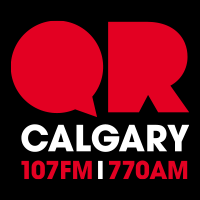The COVID-19 pandemic has driven more Calgarians into poverty, according to a study conducted by Vibrant Communities Calgary (VCC).

“Our modelling shows that there’s likely an additional 77,000 Calgarians that have fallen into poverty during the pandemic,” Patti Dolan, president of VCC, told the city’s community and protective services committee.
That marks a 40 per cent increase in people under the poverty line in the city.
“Prior to the pandemic, using the market basket measure, there were about 189,000 Calgarians living below the poverty line,” Dolan said Thursday. “That’s about 12 per cent of people in our city who cannot meet basic needs.”
The market basket measure, also known as the poverty line, is described in the Poverty Reduction Act as the “cost of a basket of goods and services representing a modest, basic standard of living in Canada.” In Calgary, the 2019 market basket measure is $49,462 for a family of four.
Ron Kneebone, professor of economics at the School of Public Policy at the University of Calgary, was surprised to hear that VCC estimates more than a quarter of a million Calgarians are now under the poverty line.
“It’s always a concern when more people in Calgary or anywhere find that they have incomes insufficient to support themselves,” Kneebone told Global News.
“That literally means they’re having trouble maintaining their housing, they’re having trouble maintaining their diet. It’s an indication of people really being in trouble.”
In addition to affecting those families, it means those families are not able to fully engage in the city’s economy to be part of the life of the city, Kneebone said.
VCC’s estimate of additional Calgarians falling below the poverty line comes from research done with the Canadian Poverty Institute.
While the majority of Calgarians were not at risk of falling into poverty before the pandemic, VCC said one in six were at risk. In the years leading up to the pandemic, they found tens of thousands had incomes just above the market basket measure.

“When we take that and combine it with market forces — what was happening here in terms of employment because of the oil and gas situation prior to the pandemic again and then the stressors of COVID and what we’ve understood in that time about unemployment — we believe that 77,000 additional Calgarians — probably more — have fallen into poverty,” Meaghon Reid, VCC’s executive director, told Global News.
A recent MNP consumer debt index showed 53 per cent of Canadians are $200 away from insolvency — a five-year high.
“The majority of people in this city who are living in poverty are the working poor. They have employment,” Reid said.
She added that those who were already living below the poverty line probably fell further into deeper poverty during the pandemic.
Post-pandemic recovery
Dolan said there remains a need to improve policies and practices to support getting people back to work, like retraining programs.
“We are seeing longer and longer protracted periods of time where people are not able to enter the workforce.”
Reid added income support programs like CERB, CRB and Alberta Works have helped Calgary’s working poor, but clawbacks in those programs limit how much an individual can work.

“We have been appealing to the provincial government to say we need to allow more hours of work for someone on income support before their income is clawed back so that we can get people reattached to the labor force in a healthy way, and get people back to work and avoid an epidemic of long-term unemployment, which we know has a lot of side effects like mental illness,” Reid said.
The University of Calgary economist agreed that people should be encouraged by income support programs to work as much as they can.
“The tricky bit in all of these programs is how much do I allow you to earn before I start to claw back some of the social income support?”
Ward 8 Coun. Evan Woolley, vice-chair of the committee that heard VCC’s annual report, said poverty is going to be one of the “big challenges” as the city reopens.
“The great part of this is that a lot of those were just lost jobs and a lot of those lost jobs will come back as we reopen,” Woolley said, noting the importance of programs to encourage people to return to work safely.
“Some people will be left behind, some of our industries will remain struggling,” Woolley said. “And it’s really incumbent upon governments, the social sectors, to lean in to support those Calgarians who will continue to struggle in the months ahead.”
Woolley said the city can support those struggling with things like not cutting off utilities due to overdue bills or offering low-income transit passes.
Economists warn of the potential of a post-pandemic and post-recession “k-shaped recovery,” where a segment of the population is able to climb back upward and another segment continues to suffer — the two paths on a graph resembling the diagonal lines in the letter ‘K.’

Reid said the likelihood of a k-shaped recovery in Calgary is high, being behind only Toronto and Vancouver as cities with the highest disparity in income levels.
“But it’s not an inevitability,” VCC’s executive director said. “There’s a lot of different inputs that we could put into the system to make sure that we’re avoiding a k-shaped recovery.
“Those are things like making sure we have things like a basic income, sustainability of housing; all of the supports that surround people who are already in the middle of that K to at least stay stable and to not go downwards, not be that downward line on the K.”
Internet and digital inequality, food access and affordable housing are all areas Reid highlighted as things the city can address to help the city’s working poor rise above poverty.
Mayor Naheed Nenshi said while the vaccination path out of the COVID-19 pandemic is hopeful, it’s important to recognize some of the losses over the last 15 months.
“Let’s honor and mourn that loss, whether it’s lives lost, or people who lost their livelihoods and make sure that we are focusing on how we can help people out,” he said.
The mayor said CERB/CRB was “something close to a universal basic income” to help families with basics, adding there should be two sets of solutions to look after Calgarians.
“The first is in government policy to make sure that people don’t fall through the cracks,” Nenshi said. “And the second is in economic growth and getting people back to work. And the first step in that is reopening businesses that have been closed. It is helping businesses ramp up to their fullest capacity — they’ve been operating at a lower capacity.
“The economic path out of this for Calgary will be slower than in other places because we started in a bigger hole, and our hole that we dug for ourselves was even deeper,” the mayor noted.
“So we’ve got to look after people to make sure they’re doing OK now, but ultimately grow the economy so they have opportunity.”










Comments